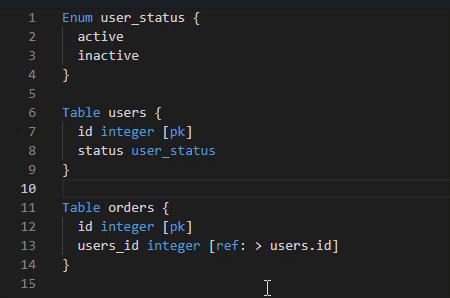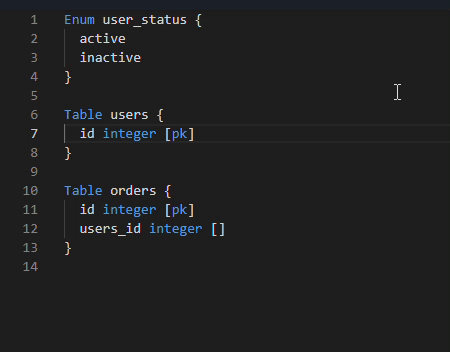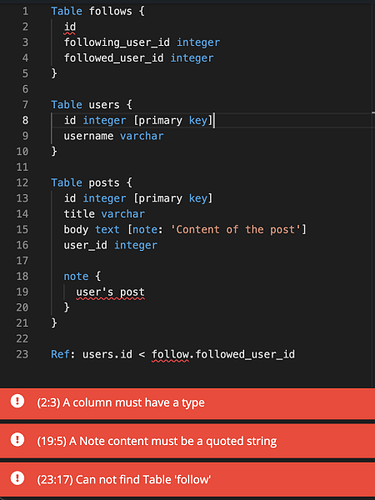We are thrilled to announce the release of our new DBML parser, bringing a range of improvements and exciting features to enhance your experience!
The new parser has been rebuilt from the ground up, resulting in a more powerful and efficient parsing process. Here are the key highlights:
-
 Improved Error Reporting: Previously, only one syntax error would be displayed at a time; now, you will receive more precise and detailed error messages, allowing you to locate and resolve issues with your DBML files more quickly.
Improved Error Reporting: Previously, only one syntax error would be displayed at a time; now, you will receive more precise and detailed error messages, allowing you to locate and resolve issues with your DBML files more quickly. -
 Better Performance: The new parser is more efficient, meaning your DBML projects will load and render faster while using fewer resources. Our benchmarks measure an up to 8x increase in parsing speed.
Better Performance: The new parser is more efficient, meaning your DBML projects will load and render faster while using fewer resources. Our benchmarks measure an up to 8x increase in parsing speed. -
 Enhanced Editing Experience: Listening to your feedback, the new parser now offers more precise typing suggestions and the ability to jump to code definition.
Enhanced Editing Experience: Listening to your feedback, the new parser now offers more precise typing suggestions and the ability to jump to code definition.

-
 Future-proofing: The new parser has been designed with extensibility in mind, allowing us to add exciting new features in the future. Stay tuned for upcoming enhancements such as including other DBML files, object inheritance, etc.
Future-proofing: The new parser has been designed with extensibility in mind, allowing us to add exciting new features in the future. Stay tuned for upcoming enhancements such as including other DBML files, object inheritance, etc.
Please note that there may be compatibility issues because the new parser has been rebuilt with a different architecture. To ensure a seamless transition, we have compiled a list of known issues along with examples (see post below) to help you quickly address them. Our support team is also ready to assist you with any questions or concerns.
Thank you for your continued support and trust in our products.
From dbx team with ![]()

